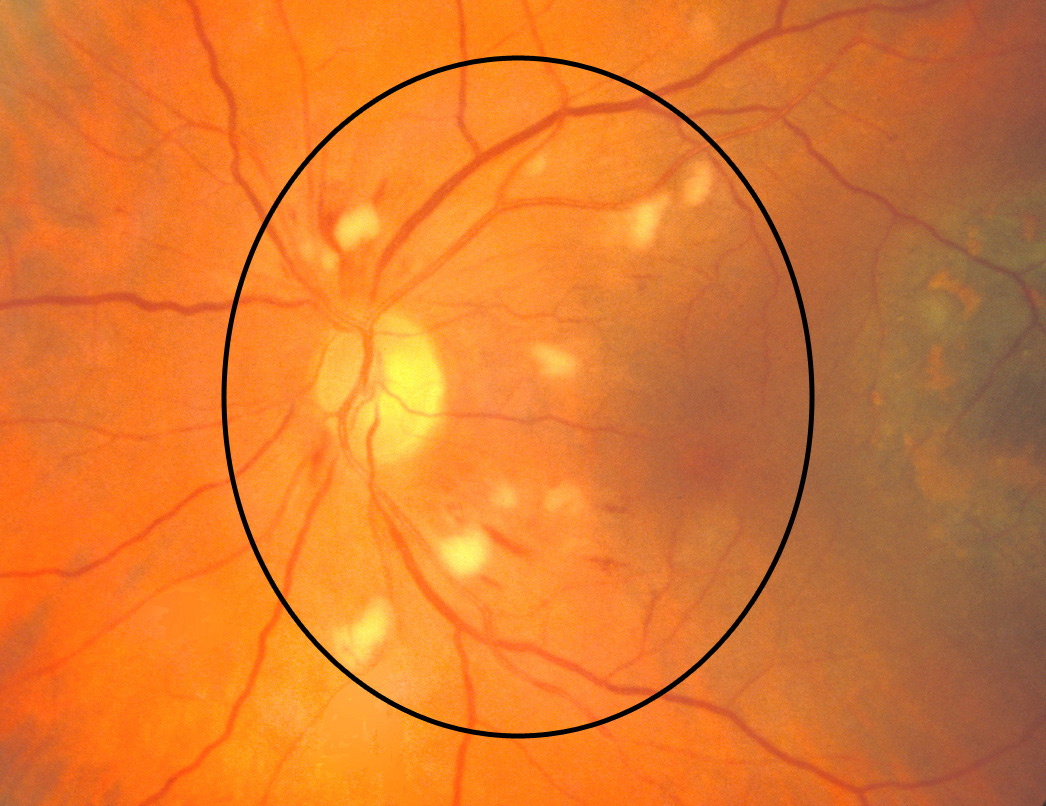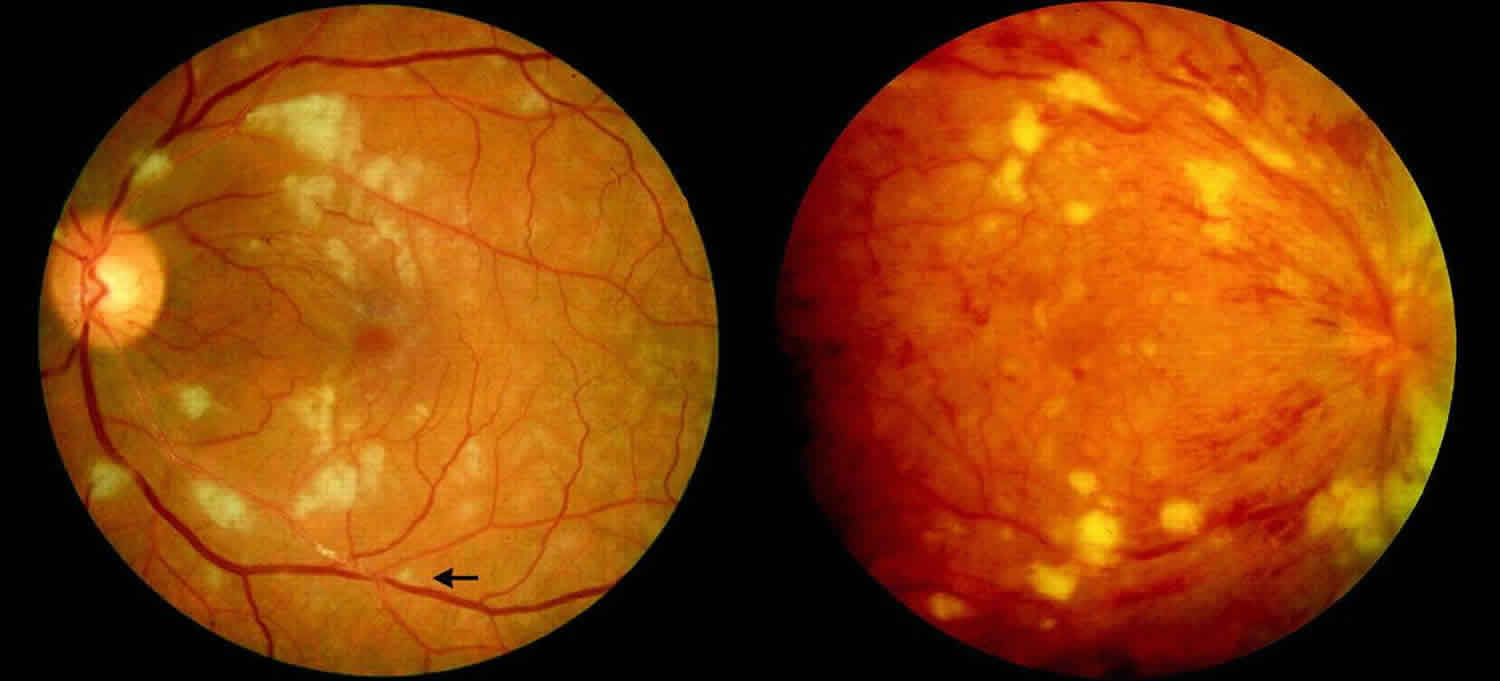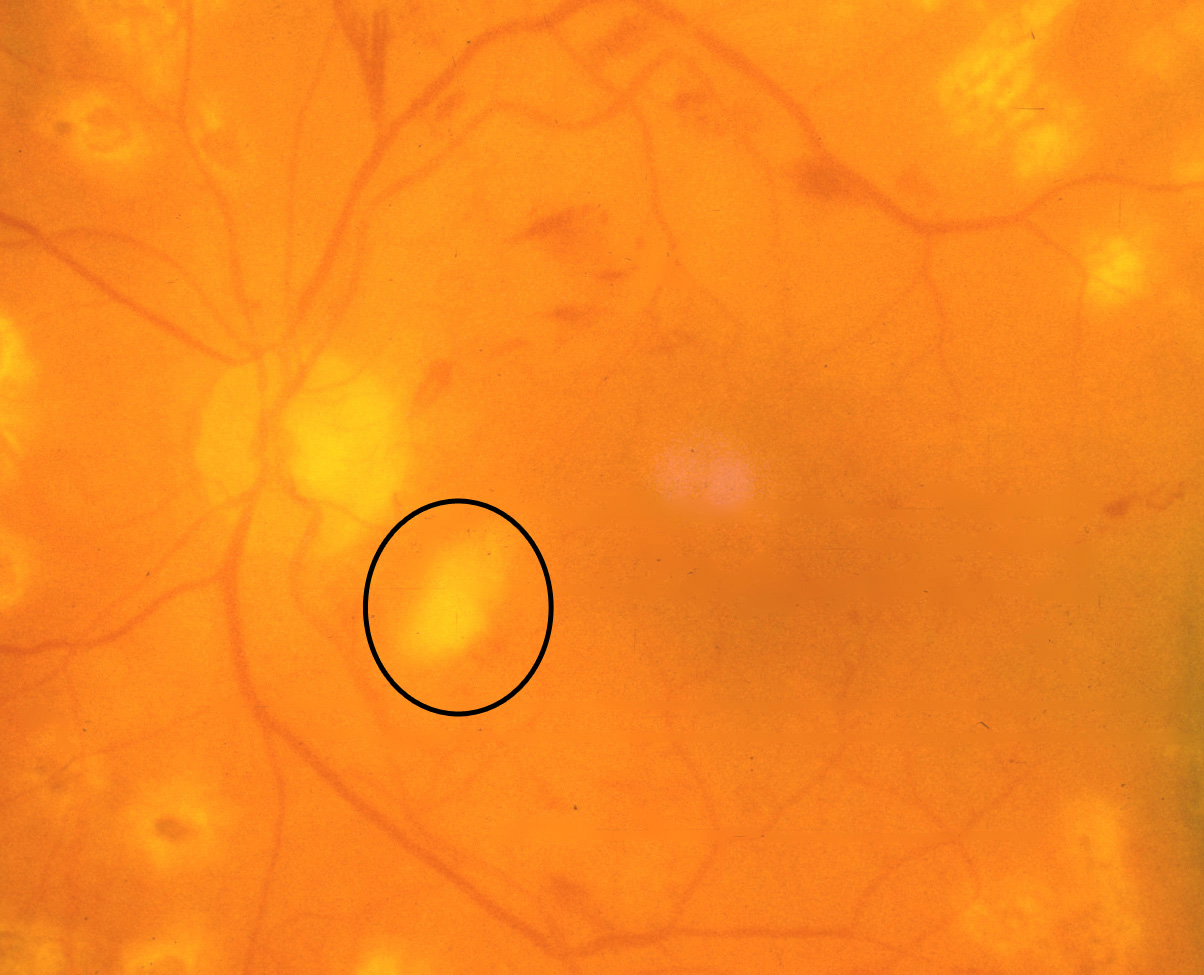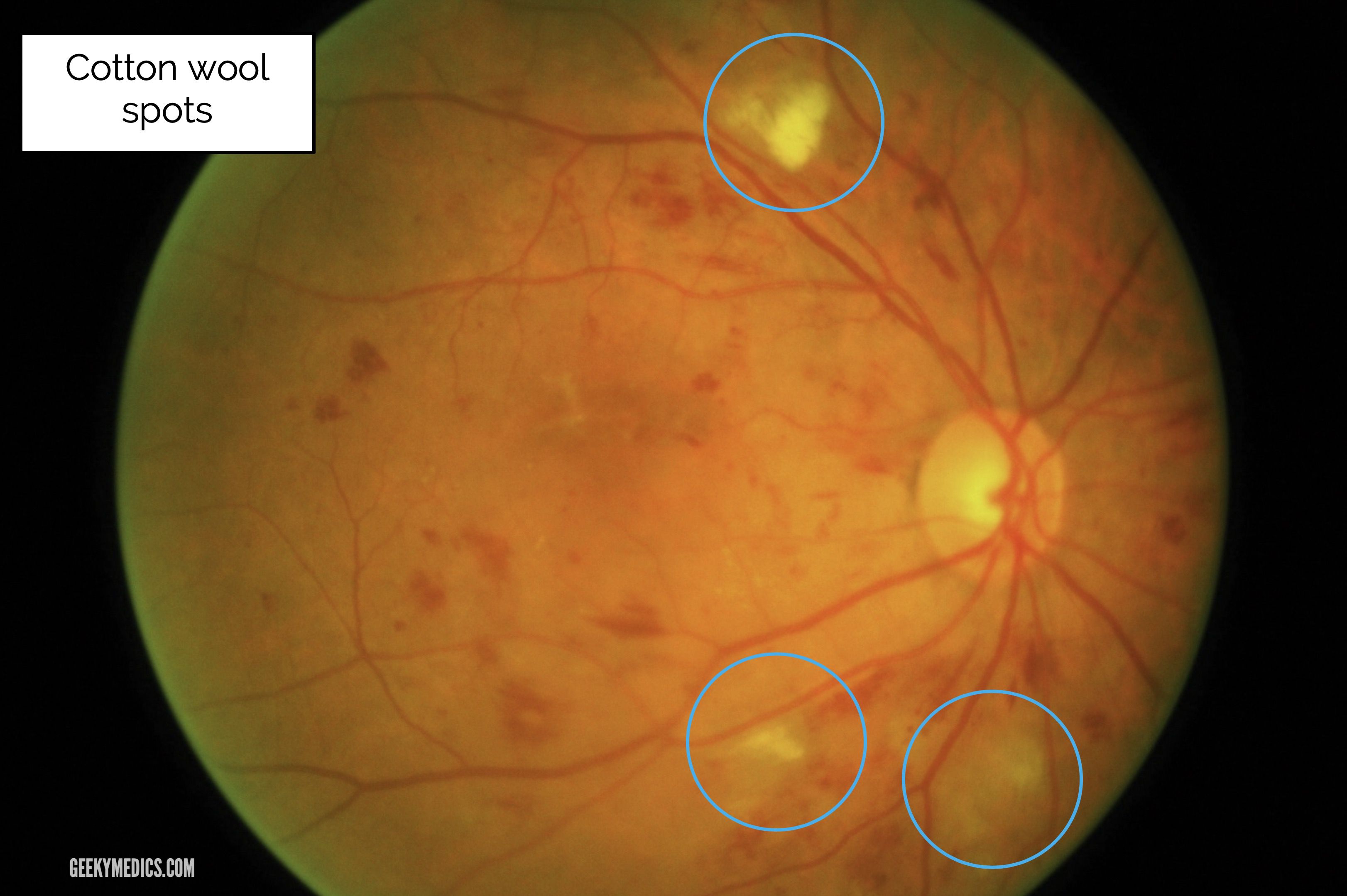Cotton wool spots, causes, symptoms, diagnosis & treatment

A sample retinal image with cotton wool spots and hemorrhages. Download Scientific Diagram
Axonal myelination in the human central nervous system is a complex, orderly process carried out by oligodendrocyte progenitor cells, which migrate under the influence of neuro-hormonal signals to generate oligodendrocytes that produce myelin.

(AB) Fundoscopic examination revealed bilateral cotton wool spots... Download Scientific Diagram
Cotton-wool spots (CWSs) are common retinal manifestations of many diseases including diabetes mellitus, systemic hypertension, and acquired immunodeficiency syndrome. Clinically they appear as whitish, fluffy patches on the retina and eventually fade with time. In this study, spectral domain optical coherence tomography (SD-OCT) with mapping.

Cotton wool spots. COMS Grading Scheme
Cotton Wool Spots : Ophthalmoscopic Abnormalities : The Eyes Have It Cotton Wool Spots What is it? How does it appear? What else looks like it? What to do? What will happen?

Cotton Wool Spots Causes and Symptoms
One of these potential retinal findings is the cotton wool spot (CWS). A CWS appears as a white and fluffy superficial lesion 0.1mm to 1.0mm in diameter that obscures the underlying retinal detail. 1,2 This small but important finding can be a marker for potentially life-threatening conditions, making it of great clinical utility.

Why cotton wool spots should not be regarded as retinal nerve fibre layer infarcts British
Purtscher retinopathy has since been described as a chorioretinopahy associated with indirect trauma, non-ocular injury, associated with a constellation of retinal findings including cotton-wool spots, retinal hemorrhages, optic disc edema, and Purtscher flecken (areas of inner retinal whitening).

Cotton wool spot in retinal fundus image (in black circle) [32]. Download Scientific Diagram
Key Points Manifestations of diabetic retinopathy include microaneurysms, intraretinal hemorrhage, exudates, macular edema, macular ischemia, neovascularization, vitreous hemorrhage, and traction retinal detachment. Symptoms may not develop until late in the disease.

CottonWool Spots and Retinal Hemorrhages Clinical Pharmacy and Pharmacology JAMA
Retinal cotton-wool spots. In contrast to a vascular occlusion of the precapillary arterial flow, mechanical distortion or traumatic laceration of the nerve fiber layer can also result in the interruption of axoplasmic flow and the development of a cotton-wool spot.

Why cotton wool spots should not be regarded as retinal nerve fibre layer infarcts British
A single cotton wool spot in one eye can be the earliest ophthalmoscopic finding in diabetic or hypertensive retinopathy. In a series of patients who had cotton-wool spots and no known medical history, diastolic blood pressure equal to or greater than 90 mmHg was detected in 50% of patients, and an elevated blood sugar was found in 20% of patients.

Cotton wool spots, causes, symptoms, diagnosis & treatment
Cotton wool spots are believed to occur secondary to ischemia from retinal arteriole obstruction 4. Cotton wool spots is thought to represent nerve fiber layer infarct and pre-capillary arteriolar occlusion. However, factors responsible for focal interruption of axoplasmic flow in the retinal nerve fiber layer may result in similar intra-axonal.

Why cotton wool spots should not be regarded as retinal nerve fibre layer infarcts McLeod 89
A cotton-wool spot, or soft exudate, is a yellow-white lesion in the superficial retina that usually occupies an area less than one fourth that of the optic disc ( Fig. 69-19 ). A cotton-wool spot can occur singly or in conjunction with many others ( Fig. 69-20 ).

Hypertensive Retinopathy Ento Key
Cotton-wool spots (CWSs) are retinal lesions, most commonly seen as manifestations of diabetes mellitus and systemic hypertension. They are also associated with a number of other etiologies including ischemic, embolic, connective tissue, neoplastic, and infectious, 1, 2 but occasionally no underlying cause can be identified. 2

Cotton wool spots. COMS Grading Scheme
The retinopathy associated with SLE is the most common type of posterior segment finding and the risk of retinal involvement varies with disease control. It may range from 3 percent in well-controlled patients to 29 percent in patients with more active systemic disease. 6,7 The most common retinal manifestation is cotton wool spots ( See Figure.

Cotton Wool Spots Caused by microinfarcts. Exploded GrepMed
Cotton wool spots in the distribution of a branch retinal artery, corroborated by fluorescein angiography, suggest BRAO. Classification of BRAO can also be subdivided by its temporal profile and the particular vessels implicated. BRAO may be described as permanent BRAO, transient BRAO, or cilioretinal artery occlusion (CLRAO), specifically.

Retinal Images BARS
Cotton-wool spots Retinal vasculitis may result in micro-infarcts of the retinal nerve fiber layer that manifests as diffuse, fluffy, cotton-wool like spots in the superficial retinal surface. [1] [12] Systemic vasculitidis such as systemic lupus erythematosus, [36] polyarteritis nodosa, [37] Churg-Strauss syndrome [38] can be associated with.

Solitary cottonwool spot in the right eye ofa patient with PGL who... Download Scientific Diagram
Cotton wool spots (CWS) are fluffy white or yellow spots that can appear on the retina. While the spots themselves don't typically cause problems, they often indicate an underlying condition. A CWS can be a cause for concern in an otherwise healthy individual. What causes cotton wool spots?

Fundoscopic Appearances of Retinal Pathologies Geeky Medics
Introduction Hypertension is a risk factor for systemic conditions that can lead to target-organ damage. Specifically, hypertension may lead to multiple adverse effects to the eye that can inevitably cause cause retinopathy, optic neuropathy, and choroidopathy.